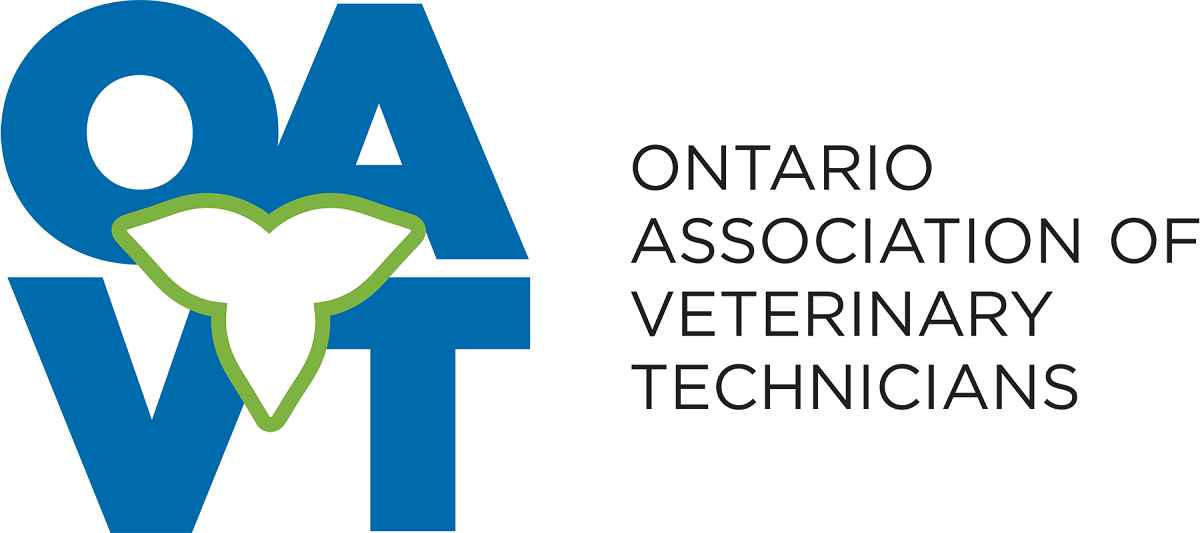ONgoing CE Opportunities
Ongoing CE Opportunities
The postings are categorized and sorted alphabetically for your convenience; they are not displayed in any order of priority or preference by OAVT. New postings are added regularly.
Table of Contents
College Programs/ Certificates/ Diplomas

This program will teach students the importance of providing an appropriate environment for a wide range of animals in both short and long term rehabilitation situations from an ecological viewpoint. The program will give students a solid foundation on wildlife rehabilitation knowledge, diagnostic and nursing skills gained through practical experience. Graduates will be able to explore a wide range of career opportunities in both the private and public sectors, including employment in natural resources, zoos, and wildlife parks, avian rehabilitation centers, natural bird sanctuaries, orphanage programs and any small or large animal veterinary clinic that receives injured wild animals. Worth 20 CE credits upon completion of program.

A graduate one-year certificate program for RVTs in response to emerging animal health care needs. Worth 20 CE credits upon completion of program
Book a seminar/Lunch & Learn or in-person course
Online Opportunities
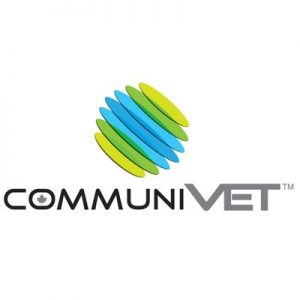
The cryptorchid in the field
Not all cryptorchid castrations can or need to take place in a hospital setting. In this webinar, Dr. Doyle discusses the approach to attempting cryptorchid castration in the field.
Presented by Dr. Aimie Doyle
https://www.communivet.com/en/fa/education/webcasts/the-cryptorchid-in-the-field
OAVT CE – 1 credit

Presented by Dr. Stephen Waisglass. In this presentation, Dr. Waisglass will detail the current evidence-based approach to the pet with food or environmental allergies. Deepen your knowledge of dermatology and find out how to solve this most challenging diagnostic dilemma!
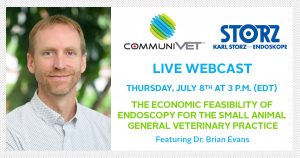
There are already plenty of expenses to consider when running a veterinary clinic. Though practice owners or managers would love to invest in all types of cutting-edge equipment, it is important to properly evaluate the economic impact and potential return before committing to any investment.
In this presentation, Dr. Brian Evans will focus on endoscopy equipment. Based on data from a peer-reviewed study published in the Journal of the American Veterinary Medical Association (https://pubmed.ncbi.nlm.nih.gov/28306484/), he will talk about return on investment (ROI), marketing plans, and techniques to maximize the utility of endoscopy equipment, as well as create client value in and out of the veterinary surgical suite.

The epidemiologist’s perspective
TACKLE THE ROOT CAUSES: How can we identify patients at risk and support healthy joints?
In this webinar, Professor Lascelles challenges common perceptions of osteoarthritis:
- Learn how many dogs may be affected by osteoarthritis-associated pain
- Discover why we should shift our focus to young dogs and look to developmental diseases as a driver of canine osteoarthritis
- Understand all relevant risk factors for developing osteoarthritis like breed, body weight and exercise level
- Learn how to support healthy joints to delay osteoarthritis development
- Discover how pharmacological and non-pharmacological pain management strategies can help prevent the progression of osteoarthritis-related pain
This is the link to view this webinar: https://www.communivet.com/en/ca/education/webcasts

The Great Wall – How to build and maintain the skin barrier through nutrition
Presented by Dr. Pye and Dr. Ruggiero
What is the skin barrier? Why is it important? What should healthy skin look like? What key nutrients are required to build and maintain the skin barrier?
During this webcast, Drs. Charlie Pye and Catherine Ruggiero will answer these questions and more as they examine the benefits of adequate nutrition for pets with skin issues.
Learn from our experts as they present:
• an overview of the different skin layers as well as key structures;
• the different functions of the skin barrier;
• a comparison and contrast between healthy and unhealthy skin;
• an overview of the different key nutrients required to build and maintain the skin barrier and how they impact the skin’s different structures;
• a shared case example managed through multimodal therapy and nutrition.
OAVT CE – 1 credit

Monday morning starts off great. But then you check your schedule and see your next appointment is marked “very nervous cat” or “can’t get cat out of carrier for exam,” you can’t help but feel stressed as the appointment approaches. With the right tools and strategies, you can offer support to this family, create a more comfortable environment for your patient and reduce your own stress.
Link: https://www.communivet.com/en/ca/education/webcasts/the-impact-of-feline-patient-stress

Presented by Dr. Deborah Linder
‘How do I even bring up weight loss to families?’ ‘We’ve dropped the amount twice and the dog still isn’t losing weight, what now!?’ Participants will walk away with strategies to answer weight loss question like these and to engage families in creative conversations to make weight loss more fun and effective. Troubleshooting through case examples in this session will provide ready-to-use and practical tools for veterinarians.
Program Agenda:
- Client communication about obesity including diagnosis, clinical considerations, and consequences of obesity.
o Full nutritional assessment based on WSAVA and AAHA guidelines
o Client communication surrounding diagnosis and engagement in weight loss plans
o Clinical considerations and sequelae from obesity
- A review of resources that are available to pet owners and to veterinarians online, such as evidence-based blogs and websites written by specialists with non-biased information.
o University websites with pet nutrition information (www.petfoodology.org)
o WSAVA Nutrition Toolkit, AAHA Weight Management Guidelines, and Obesity Algorithms available online
- Case examples will provide an opportunity to see how these resources and additional strategies can be applied to patients and in interactions with owners.
o Obtaining complicated diet histories and troubleshooting difficult cases
o Creating nutritional goals and empowering families to improve their pet’s quality of life
Learning Objectives:
After this session, participants will be able to:
- Perform a full nutritional assessment that incorporates the needs of the pet and family.
- Identify resources and tools for providing evidence-based obesity information to clients.
- Engage pet owners more efficiently in conversations about obesity.

In this course, Senani Ratnayake, BSc RVT discusses the various circumstances that lead to euthanasia, the compounding factors that dictate how a client reacts to the loss and how as veterinary professionals we can successfully navigate these conversations. Through this video training, you will learn that all clients process information differently, but if we provide a tailored approach to how we communicate we can better prepare them for the decisions they need to make.

Presented by Dr. Caitlin Grant, Dr. Sarah Dodd and RVT Shoshana Verton-Shaw. Though pet obesity and weight management may seem daunting for some pet owners, getting clients to commit to a long-term weight management plan for their furry friend can be quite the feat for veterinary professionals. During this presentation, we will discuss obesity prevention and weight-loss management, as well as the importance of therapeutic weight-loss diets.

The orthopaedic surgeon’s perspective
This webcast is presented as part of our new series on canine osteoarthritis addressing pathogenesis, disease awareness, canine and owner quality of life, and osteoarthritis management, including new developments.
Get one step ahead: How can we diagnose osteoarthritis in the early stages and slow down disease progression?
In this webinar, Professor Lascelles introduces new strategies for managing canine osteoarthritis:
• Understand why early diagnosis of osteoarthritis in young dogs is so important for their long‐term health and comfort
• Learn to spot the earliest signs of osteoarthritis pain, before the dog is visibly lame
• Discover how to overcome potential barriers to diagnosing osteoarthritis in young dogs
• Learn different ways of talking with owners about their dog’s osteoarthritis
• Discover Dr. Lascelles’ “3+3” programme for managing osteoarthritis in young dogs
OAVT CE Credit: 1

Find out why small and toy breeds often need advanced periodontal therapy (including tooth extraction) much earlier in life than larger dogs do, and get tips on when and how to initiate periodontal care in at-risk patients… all from the comfort of your home or office!

Discover the results of the Valve study on dual vs. triple therapy- it could change the way you treat congestive heart failure(CHF) due to myxomatous mitral valve disease (MMVD).

This is a 60-minute webinar. To watch on-demand: https://www.communivet.com/en/ca/education/webcasts/this-cat-isnt-a-beep
Cats are the most popular pet today, resulting in many of them needing veterinary care. Common misunderstandings still widely circulate about the common Felis sylvestrus catus causing veterinary professionals to feel frustrated with their domestic short‐haired patients. For instance, many cats are being incorrectly identified as “mean” when they are actually scared, which may lead to a lack of appropriate care.
During this webcast, Animal Behaviour Specialist, Dr. Colleen Wilson will describe the most current scientific facts about cat behaviour to help you get your feline patients to the clinic more comfortably and to ensure a more positive experience while there.

Presented by Dr. Martha G. Cline
Strong communication techniques can enhance nutritional conversations in the examination room. Well-meaning pet owners can become entrenched in and confused by certain feeding practices. This presentation will review communication skills and tools to help turn potentially contentious conversations into effective ones.
What you’ll learn:
Recognize the 3 aspects of communication (content, process, and perceptual) and how to apply these aspects when making nutritional recommendations
How to utilize open-ended questions to enhance collection of a nutritional history
Recognize and acknowledge a client’s perception with regard to pet nutrition before providing a nutritional recommendation
To affinity and beyond: An arthritis story
We have an opportunity to partake in the journey of every arthritic pet. Having an affinity for arthritis management allows us to appreciate different perspectives and incorporate a variety of components into multimodal patient care. During this webcast, Dr. Tara Edwards will focus on life at home for the arthritic pet and will include further discussion on lifestyle adjustments, environmental modifications, and assistive devices which can aid in promoting mobility and preventing injury. Going beyond analgesics and nutritional recommendations allows us to open additional chapters in an arthritis story and provides our clients with a larger range of complimentary support options.
OAVT Credits: 2 CECs

Feline lower urinary tract disease presents multiple challenges for veterinary practitioners; there are numerous causes and recurrence is common. Many of the treatments do not have rigorous scientific evidence. Through a case‐based interactive approach, this lecture will review the most common causes of FLUTD, discuss the diagnostic workup, and then consider treatment modalities, with an overview of the medical literature

Top 5 myths about cats and parasites
There is a misconception that indoor cats don’t get internal or external parasites. In part, this seems to stem from the belief in a mystical bubble that indoor cats live in, protecting them from all infectious diseases. During this webcast, feline specialist Dr. Kelly St. Denis will explore the many truths about cats and parasites.
OAVT CE – 1 credit

Updates on the management of chronic kidney disease
The International Renal Interest Society (IRIS) Guidelines provide management recommendations for each stage of chronic kidney disease (CKD). While dietary modification remains the mainstay of medical management for patients with CKD, advances in the management of uremic symptoms have improved the quality and quantity of life for many canine and feline patients with CKD.
During this webcast, Dr. Sheri Ross will review the dietary and pharmacologic management of the most common metabolic derangements encountered during the course of CKD, as well as discuss:
- the rationale for the IRIS staging system of CKD;
- when and how to apply dietary therapy as the key intervention in managing CKD in cats and dogs;
- some of the newer therapeutic options for many common metabolic derangements associated with kidney disease; and,
- how to develop a long-term treatment and monitoring plan for a newly diagnosed CKD patient.
OAVT CE Credit – 1
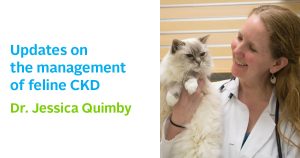
Updates on the management of feline CKD
This is a 60-minute webcast and it will be available for on-demand viewing as of November 5 2021. This is the link to register: https://www.communivet.com/en/ca/education/webinars
What’s new in feline CKD? This presentation will discuss common metabolic disturbances and secondary complications that are associated with feline CKD, as well as updates on our growing body of knowledge in this field. Special attention will be given to management of appetite. Recent literature will be reviewed to discuss the degree of evidence available for the efficacy of current recommended therapies for feline CKD.
Objectives:
- Review common metabolic disturbances and medical complications seen in feline CKD
- Appreciate new data on strategies for medical management of feline CKD
- Understand the importance of formulating and actively managing a nutritional plan for the CKD patient.

Vaccination conversations on CommuniVET Part 3: Gaining alignment on a clinic vaccination plan
Dr. Enid Stiles and Dr. Melanie Normand are general practitioners who have a special interest in vaccination and will lead a unique and innovative discussion with the audience on vaccination
issues raised by CommuniVET™ members in a 2022 survey.
This final instalment will focus on how to get your team and clients on board with your clinic’s vaccination plan, which includes:
• Agreeing upon a clinic vaccination protocol with your team
• Gaining pet owner acceptance with your vaccination recommendations
OAVT Credit – 1 CEC

Vaccination conversations on CommuniVET™ Part 2 – 2022 Canine Vaccination Guidelines
Dr. Enid Stiles and Dr. Melanie Normand are two general practitioners who have a special interest in vaccination and will lead a unique and innovative discussion with the audience on vaccination issues raised by CommuniVET™ members in a recent survey. In this second session, they have an opportunity to discuss with you tips from the recently published 2022 AAHA Canine Vaccination Guidelines with a focus on:
Managing dogs overdue for vaccines
Managing administration of multiple vaccines in a single visit
Share your perspective with your peers through polling questions while learning how to interpret and apply current vaccination guidelines in your practice.
OAVT Credit = 1

Vaccines are for life. Developing preventive vaccine protocols that get cats back into the clinic
Indoors or outdoors, all cats need preventive health care and vaccination. Designing the right vaccine protocol for each cat can be challenging, but the biggest challenge is getting them into the practice in the first place. This webcast will focus on feline vaccine protocols and how to use cat-friendly techniques to create a more positive visit that gets them coming back again and again!
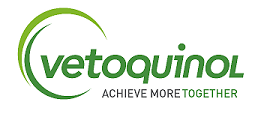
From Vetoquinol Canada. Cleaning and disinfection guide for animal health facilities. Step-by-step protocols and techniques for employees responsible for the cleaning and disinfection of animal care facilities.
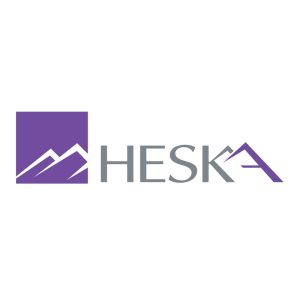
Instructor: Soren Boysen DVM DAVECC and Serge Chalhoub DVM DACVIM (SAIM)
Pre-Recorded Webinar
Join us for this two-module webinar on VPOCUS – a protocol that you can use in your practice everyday to answer key questions in your post surgery, post trauma, critically ill patients.
A key approach to learning and expanding the role of ultrasound is to get comfortable asking yes/no binary questions, such as but not limited to; does the patient have a pneumothorax? Does the patient have pleural effusion? Does the patient have interstitial alveolar pathology? Can the patient be administered a fluid bolus? It the cause of this patient’s respiratory distress likely cardiogenic in origin? Is pericardial effusion the cause of this patient’s shock? With this approach clinicians can master aspects of point of care ultrasound at their own pace.
Participants of this online CE will learn ways to use ultrasound for patient assessment and monitoring in a wide range of clinical scenarios.
https://heskavetshop.com/collections/online-education/products/vpocus-webinar
$495

What’s in a vaccine? Protecting cats against common infectious diseases
Advances in feline medicine have given us an expanded understanding of feline infectious disease and how we can utilize vaccine technology to protect cats. During this webcast, we
will explore these timely topics, including taking a closer look at what’s new with feline retroviruses.
